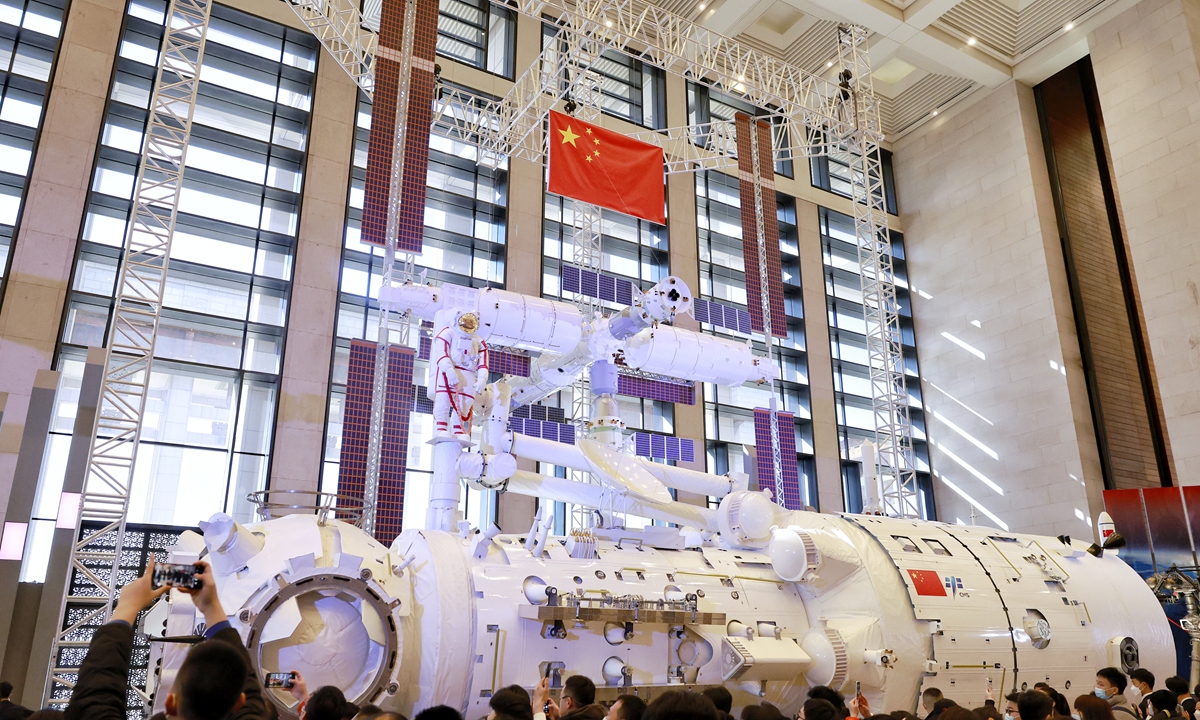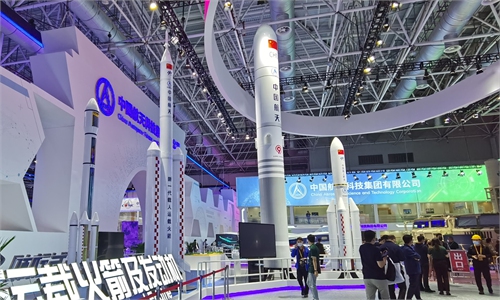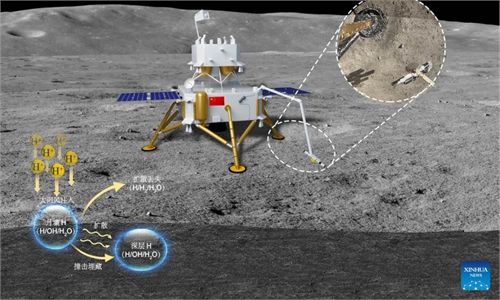Scientist reveals key objectives for lunar station project co-proposed by China, Russia

Visitors take photos of the 1:1 scale model of the Tianhe core module of China's space station on February 24, 2023. The model is part of an exhibition showcasing the achievements of China's manned space program over the past three decades, which opened the same day and will run for three months. Photos: Li Hao/GT
The International Lunar Research Station (ILRS), a mega space project jointly proposed by the national space agencies of China and Russia that is intended to become operational by 2035, has selected five primary scientific and application objectives, including learning about the moon's evolution and searching for another habitable planet for humanity, revealed Zou Yongliao, head of the lunar and deep space exploration division of the Chinese Academy of Sciences (CAS).
"The review and study on the blueprint for the ILRS has yet to be concluded, but phased progress has been achieved, with scientists coming up with specific objectives for science and applications," Zou, who is also the deputy head of the CAS National Space Science Center, told a recent national space conference, according to an article the center's WeChat public account published on Tuesday.
Zou told the Global Times on Wednesday that such objectives are the results of two-year-long reviews by leading scientists from both China and Russia, and Chinese scientists played a key role in proposing them.
The scientist noted that the moon is still the "major field" of space exploration and the construction of the ILRS was a great necessity.
The primary goals for the ILRS will include first studying the moon's evolution, so that scientists could construct a detailed structural module of the lunar interior in a plan called "transparent moon."
The scientists will also carry out exploration of star formation and activity, search for habitable home planets for humanity in space, and seek to answer the question if we are alone in the universe.
Other objectives comprise observing the sun and Earth from the moon, and conducting lunar-based experiments in basic science, Zou revealed, citing studies on "plants' growth and development in the lunar environment" for example.
The ILRS scientists will also attempt to make use of lunar resources including minerals and solar energy.
Russia and China are actively cooperating in the area of space activities, first of all on the ILRS, the director general of Russia's state space corporation Roscosmos, Yury Borisov, said on Tuesday, Russian news agency TASS reported.
According to Borisov, work is underway on the first stage of the ILRS project -- domestic lunar programs. Russia plans to launch three lunar missions. "We will proceed to the second stage while discussing the results of the first stage," he added.
China aims to complete the building of the basic structure for the ILRS by around 2028 through its Chang'e-6, -7, and -8 lunar probe missions, said Wu Weiren, the chief designer of China's lunar exploration program, in March.
Chang'e-6 will attempt to retrieve 1-2 kilograms of samples from lunar pole regions and return them to Earth. Chang'e-7 will land on the south pole of the moon to try to find ice and survey the region's environment and landform. Chang'e-8, the final phase, will scout how to exploit the resources on the lunar south pole, Wu elaborated.
According to Wu, the basic structure, which will be built by around 2028, will consist of lunar landers, rovers and "smart hoppers," as well as an energy system, communication infrastructure and human life support system.
According to the official road map for the building of ILRS, which was jointly unveiled by Roscosmos and China National Space Administration in June 2021, the construction of the lunar station is expected to be completed by 2035.
Two missions are planned in 2026-2030 to test the technologies of landing and cargo delivery, as well as the transportation of lunar soil samples to Earth.
The plans envisage developing infrastructure in orbit and on the moon's surface in 2031-2035, in particular, communications systems, electrical power, research and other equipment.



